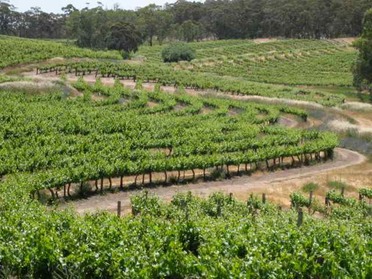
The same conversation that prompted the previous post - the labels and ranges can thrifty wine drinkers head towards without much risk of disappointment - also, unsurprisingly, veered off towards the fifth of the big five Australian wine labels in terms of last bottle bought, namely the cleanskin. I must admit I’m not 100% cleanskin-friendly myself, but I can understand why they’ve acquired such a significant share of the market.
The average consumer probably isn’t sure how cleanskins come about so, if you need an explanation, here ‘tis.
We see frequent references to the fact that Australian wineries produce much more wine than the local market can absorb, and while there are substantial export sales there is still a large quantity of wine that’s left taking up space in cellars and warehouses across the country.
Exactly how much wine falls into that category is, of course, difficult to tell. It’s not the sort of info that your average CEO is going to be shouting from the rooftops.
But it does need to be sold, it cost money to produce and bottle, grape growers were paid, even if they mightn’t have been paid too much, so how do you do it? And when you do sell it, how do you move it without doing too much collateral damage to your brand name, particularly if you’re a relatively small producer?
Small producers aren’t churning out the volumes the major players in the industry use as a major negotiating tool when they’re dealing with the big liquor chains.
If small producers are going to survive they need to be able to get the best possible price for what they produce. If you’re only producing one or two thousand cases every year, there’s not much room for error. And small producers probably know how many of their one or two thousand cases they’re likely to be able to move. So, if you’re a small producer and you’ve made two thousand cases but know you’re probably only going to be able to sell fifteen hundred, what can you do with the excess?
Obviously, you’re going to want to sell it. But, assuming your usual price point is in the twenties, how do you move the excess without damaging that price point?
That dilemma isn’t confined to small producers. A significant factor in the Aussie wine glut is the vast quantities of Kiwi sauvignon blanc we’re pouring down our collective gullets.
When ‘Er Indoors and I headed off for a drink with a few friends just before Christmas one of the party, someone who fits right in the demographic I’m writing for, produced a $6.99 New Zealand sauvignon blanc cleanskin with an apology that it probably wasn’t up to the quality that some of the rest of us were used to.
I’d been expounding the virtues of various establishments we’d recently visited in the Barossa and the Clare Valley, so you can probably understand why the apology was made.
On the other hand, the Kiwis generally turn out a decent sauvignon blanc.
This one was so decent that Jimbo, who knows his wine, took half a dozen when he beat us to the liquor barn the following day by a mere fifteen minutes. Guess what we were looking for?
I suspect Jimbo cleaned out the single bottles that were on the top of the display beside the front door, because when we came in search of a box and sighted one at the bottom of the display, the attendant had to do a bit of rummaging to extract it. In the process she unearthed another half-dozen and asked whether we’d like that as well.
Predictably, it was the last box they had, and the same wine hasn’t been sighted since. Or maybe it has, in a labelled incarnation at a significantly higher price point.
In cases like that, why would anyone in their right mind pay eighteen dollars for a bottle when they can buy the same wine for seven? Some restaurants are having the same sort of problem when diners spot something on a wine list that they know they can buy on special at a third of the price.
So if you’ve wondered why those piles of clean skins are stacked up near the front door of the bottle-o, wonder no more.
Of course, when you buy one you pays your money and you takes your chance but chances are you’ll be getting something that’s more than drinkable.
Thursday, 14 May 2009